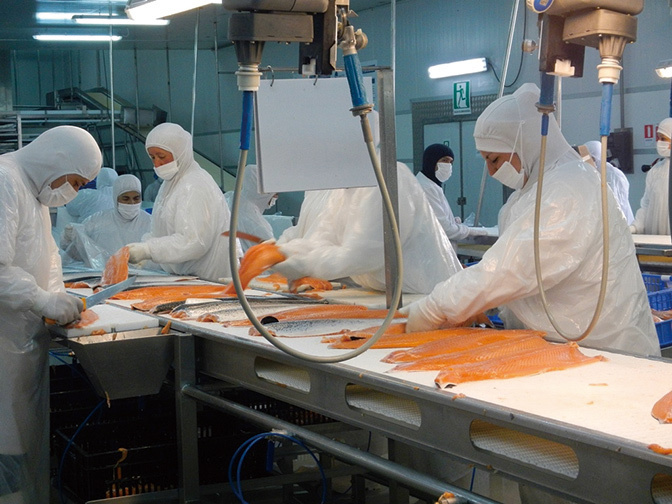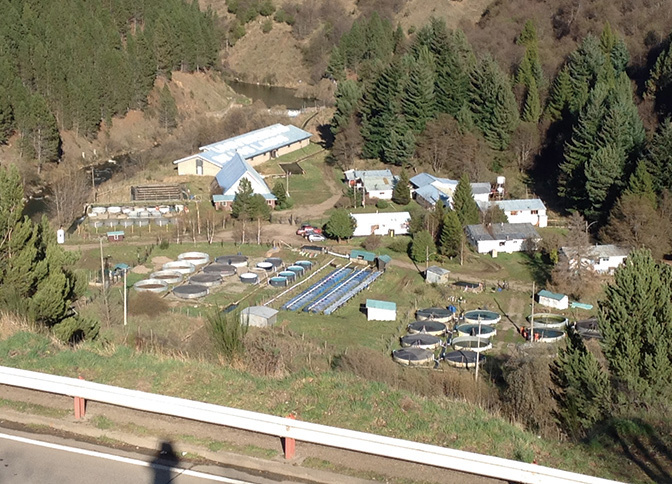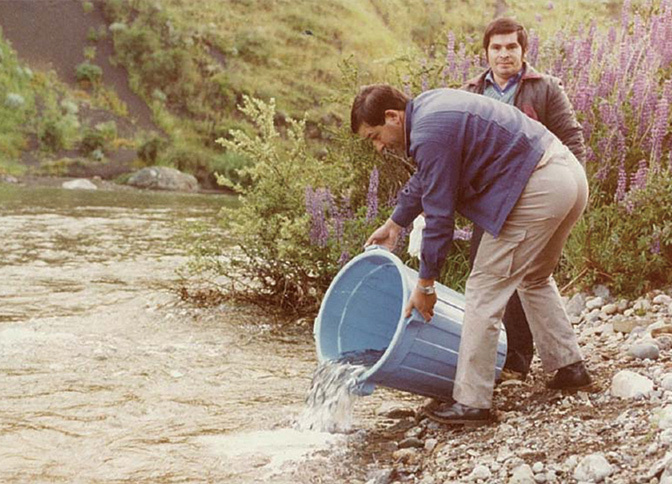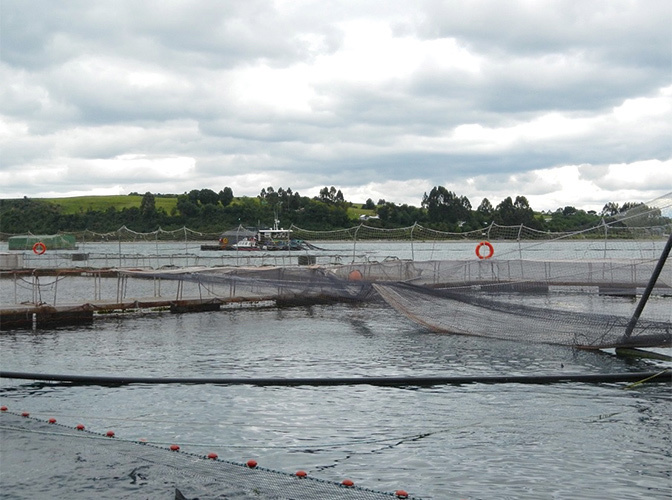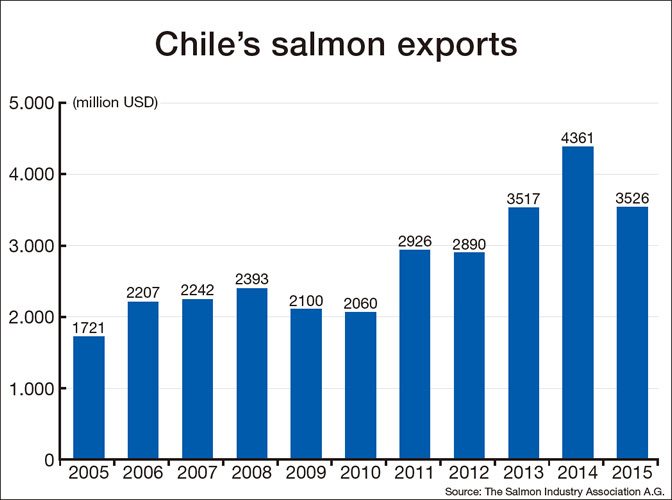Chile is the world’s second-largest exporter of salmon after Norway. Salmon exports amounted to approximately USD 3.5 billion in 2015, and the top destination was Japan, which accounted for 25% of the total value. Chile’s salmon industry, including processing, employs about 70,000 workers, and it has become a key component of the country’s economy. Japanese assistance from both the public and private sectors has had much to do with the origins and development of salmon farming in Chile, so much so that people now talk about the “salmon ties” between the two countries.
After being processed in local factories, large salmon raised in pens are exported from Chile to dinner tables around the world.
The history of these ties goes back about half a century. The Chilean government was searching for ways to help small fishing businesses, and Japan was looking for new supply sources for salmon. So the interests of the two sides meshed. In 1972 the Japan-Chile Salmon Project began with the aim of farming and releasing young salmon. Hidemitsu Sakurai, head of the Japan International Cooperation Agency (JICA) office in Chile, who was involved in the project from 1985 to 1987, recalls, “The purpose of the project was to bring Japanese salmon to Chile and establish this fish as a marine resource here. First of all, therefore, we decided to bring salmon eggs over from Japan, hatch them, and release the young fish into a river in Chile, aiming to have them return there.” JICA experts dispatched to Chile directed the construction of a hatchery, and starting in 1974 chum salmon were hatched and released. These efforts continued for several years, but the objective of having the salmon return was not achieved. In order to increase the possibility that the salmon would return and thus sustain the project, the JICA experts considered ways of producing salmon eggs in Chile. They adopted the method of ocean farming, hatching chum salmon in fresh water and then transferring them to a pen in the sea, where they were raised to adult fish so as to serve as a source of eggs. In 1982 they succeeded for the first time in producing eggs from locally raised chum salmon. They hatched the eggs and released the young fish. Though some of them returned, even this ocean-farming method did not succeed in establishing the chum salmon as a local marine resource within the given timeframe. However, the trial use of a pen in the sea for raising the fish served as a highly valuable experience for Chilean technicians.
The Shiraishi Hatchery in Coyhaique played a central role in the Japan-Chile Salmon Project, and research activities continue to be conducted here.
Young salmon were released into a river for the first time under the project in 1973.
In 1981 a Japanese company succeeded for the first time in using ocean farming to raise and harvest a substantial number of silver salmon in Chile with imported eggs. Subsequently, Chilean companies and a local foundation also became involved in raising silver salmon, and the prospect of commercialization of this undertaking was coming into view. JICA experts, drawing on the successes that had been achieved, tackled the outstanding issue of developing a method for producing disease-free eggs locally. Thanks to their efforts, it became possible to produce them from locally raised silver salmon suited to the Chilean environment and to supply them to fish-farming operators, who thus became able to raise and harvest the fish on a steady basis. This, combined with the ripe timing for growth in the business, led to the subsequent development of the salmon-farming industry. This industry continues even now to be sustained by Chilean technicians who engaged in salmon farming after learning about techniques for harvesting and hatching eggs, preventing diseases, developing feed, managing fish pens, and dealing with other aspects of this undertaking under the auspices of the Japan-Chile Salmon Project.
Chile has become an advanced country in South America, but the salmon-farming industry still faces a complex set of issues for the future. As Sakurai explains, “The issues include establishing salmon farming in a manner that considers harmony with the environment and coexistence with small fishing businesses, as well as stabilizing salmon farming operations with measures to deal with red tides.” The strong “salmon ties” that Japan has built are sure to play a major role in solving the issues that Chile’s salmon-farming industry faces and further developing this industry in the future.































































































































